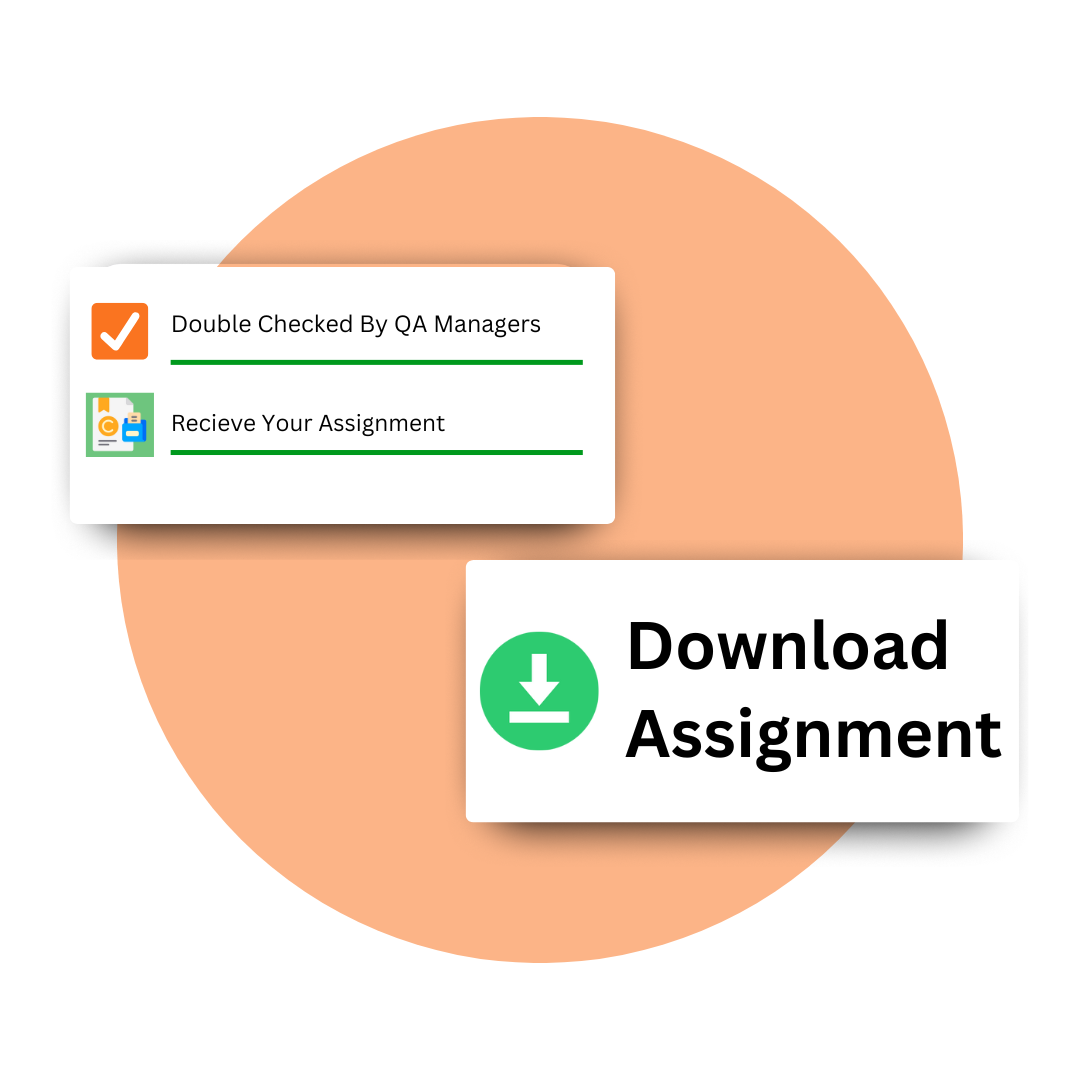Follow these steps to make sure that you are going to boost your academic success rate.

Fill your all the details and describe your assignments requirements and conditions.

Once you fill in your details or after you receive a quote you will proceed towards payment.

Once your assignment is done by writers, you get the assignment by mail then you can download it.
Get 100% unique material created by highly qualified writers with advanced degrees, guaranteeing excellent quality without the need for artificial intelligence.
We are excellent at fulfilling deadlines. Regardless of how quickly you need the paper, our 24-hour turnaround guarantee guarantees you won't miss a deadline.
Take advantage of our encouraging guidelines, Our top goal is your pleasure, and we accept accountability for all of our work.
To make sure you get exactly what you need, we provide free modifications upon request if you're not happy with the finished product.
Do you require some help with a CIPD Level 5 assignment? If so, then hire our UAE writers, and we will ensure that the work is produced according to your needs and requirements. We can help you with a CIPD presentation assignment.
Our writers are quite skilled in a variety of project types. We have skilled essay writers for UAE students who can complete any essay assignment, no matter how difficult, on time and without plagiarism. Therefore, place your purchase now to receive savings on prompt and precise assignment assistance from UAE providers.
Evidence-based practice, or EBP, is the systematic process of decision-making. In this stakeholder interests are explained and related to the best available evidence. EEBP’sobjective is to secure a decision-making process for human resources, employee engagement, training, and organizational development in support of people practice.
In UAE or other regions also, EBP become increasingly important in people’s practice due to the dynamic nature of the workforce and rapid progress in market conditions. EBP can improve organizational outcomes such as enhanced employee performance, increased retention rates, and higher overall productivity.
The above strategies would be used to effectively implement EBP in the practice of people’s lives:
Embedding EBP in Decision Making-By doing so, HR professionals will enhance credibility, and strategic alignment, and facilitate a culture of continuous improvement.
The following analysis tools can be used to effectively diagnose organizational issues and identify potential for improvement:
The practice of people entirely relies on the ability of critical thinking to be important. It is a good decision-making tool as it facilitates objective analysis of information, the evaluation of arguments, and reasoned conclusion-making. The basic principles of critical thinking are as follows:
Critical Thinking Application
In practice, critical thinking can be manifest:
There are several ways through which situations can be evaluated through other forms of decision-making practices:
Ethical views have a good influence on people’s decisions in real-life practice. Some of the major ethical theories are:
There are numerous analytical data interpretations one could use in answering a people practice issue. Often, the approach is determined by the type and nature of data being used but also by the specific issue at hand. Some of the usual data analysis methods are as follows:
Whereas advantages of people’s practice activities and initiatives have been explored for a long time, several key findings have been established among them: Individuals who frequently participate in practice activities tend to be better in health status and lower in the potential risk of chronic disease.
Practice activities relate to increased happiness and psychological well-being with other feelings of serenity and contentment. Practice may allow greater attunement with one’s inner knowing, or even intuition, for guidance and support purposes in much of life.
Activities associated with the collective practice, like prayer or meditation groups, can also strengthen ties inside the group as well as a sense of belonging, and they can enhance interactions among members of the community.
In drawing up regulations for the kinds of practice activities and projects people should undertake, the pros and cons, as well as the costs of various options, need to be taken into account. Key considerations include:
Certain tools enable organizations to measure their performances in terms of financial as well as non-financial. The financial performance could be measured in dimensions like profitability, cash flow, and ROI. Other aspects relating to non-financial performance can be employee satisfaction, customer satisfaction, growth, and social impact.
An organization needs to decide on the right mix of performance measures, something that depends solely on the specific organization. For instance, a start-up would emphasize growth potential over profitability, while a large corporation might have more regard for ROI and cash flow. Moreover, the sector in which the organization is operating can influence the choice of metrics; for instance, a charitable organization might focus more on social impact while a manufacturing firm will focus more on productivity versus employee satisfaction.
Measuring and valuing the impact and worth of people can therefore be done by taking up various methods. Some of such common methods include surveys, interviews, focus groups, observations, and data analysis. They all have unique strengths and weaknesses. That means that choosing the best ones for the given circumstance is important.
Surveys are one of the most commonly used methods for obtaining aggregate, quantitative information regarding employees’ attitudes and perceptions regarding the effectiveness of people practices. Interviews can provide qualitative as well as quantitative data regarding the use of practice and training time besides delivering insights into employee experiences.
Another effective method is the focus groups. It allows small groups of employees to discuss their interactions and suggestions regarding behaviours. Observation will provide data on behaviours in practice usage and interactions with customers.
Finally, data analysis is applied in the interrogation and interpretation of all information gathered from surveys, interviews, focus groups, and observations. It is through data analysis behaviour patterns and trends in the attitudes and behaviour of the workforce are established.
An appropriate selection of methods tailor-made for the specific organizational context will become the crux to measuring the impact and value of people’s practice, as often it is the combination of some of these methods that gives the most complete understanding of the effectiveness of the practice.
Discover our UAE students' reviews, telling about their experiences and opinions on our professionals.
A
Aisha Rahman

I was struggling with my CIPD Level 5 case study, but the team at cipdassignmenthelper.ae provided invaluable assistance. Their expert insights and structured approach helped me achieve a high grade. I couldn’t have done it without their support!
M
Mohammed Zayed

The support I received for my CIPD Level 5 assignments was exceptional! The writers understood the requirements perfectly and delivered work that exceeded my expectations. I felt confident submitting my essays, knowing they were top-notch.
M
Mansoor Ali

I was struggling with some CIPD Level 5 concepts at London American City College, but the CIPD Assignment Helper clarified everything. Their assignments are detailed and thorough, and my confidence has skyrocketed!
A
Asma

The experts at CIPD Assignment Helper were friendly and knowledgeable. Studying CIPD Level 5 at the University of Wollongong in Dubai is tough, but their support helped me stay on track and succeed in my assignments.
H
Hassan Raheem

Studying CIPD at Blue Ocean Academy in Dubai is demanding, but CIPD Assignment Helpers made it so much easier. They handled my CIPD Level 5 assignments professionally and provided the best assignments that made me stress-free of assignments.
Z
Zayed Hussain

CIPD Assignment Helper is a budget-friendly option for my CIPD Level 5 assignments. The quality they give for the price is unbeatable. I got excellent grades and I’ll use them again.
Have an easy time unleashing your potential with professional aid from your CIPD 5CO02 assignment because our professional writers are ready to guide you for great performance and to acquire the grades you want.
